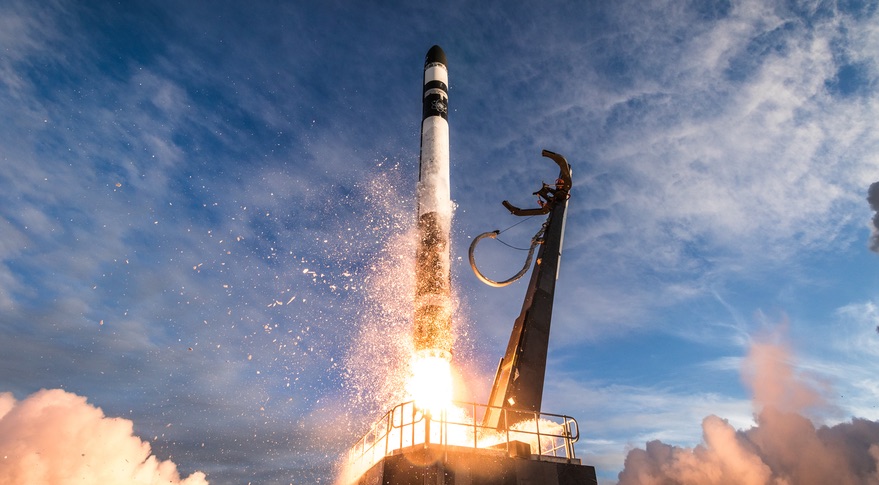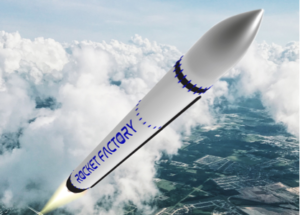Rocket Lab’s Impressive Journey: no Success without Losses
21st May 2021
Rocket Lab was founded in 2006 by New Zealand engineer, Peter Beck, who wanted to develop commercial orbital launch systems. Three years later, the company managed to present its first suborbital rocket, Atea. The vehicle, 6 metres high and weighing only 60 kilograms, was successfully launched from one of the Mercury Islands in New Zealand on 30th November 2009. A payload weighing 2 kg was delivered above the Karman line (100 km), and even though Atea completed its task, the rocket was never launched again. This is how Rocket Lab’s Electron, a two-stage ultra-light rocket with a payload mass of up to 250 kg, was born.
Rocket Lab Electron – best for CubeSat launch
Seven long years have passed since the signing of the US government contract and launching Electron Rocket Lab for the first time. This time was not spent in vain, though. Despite the ever-increasing competition, Electron is still one of the best vehicles for launching nanosatellites and CubeSats.
Rocket Lab’s Electron features:
- Height 17 m, diameter 1.2 m
- 12 550 kg weight
- Payload capacity: to LEO — 250 kg, to SSO (500 km) — 150 kg
- 10 main Rutherford engines (9-1 stage)
- Kerosene-liquid oxygen fuel combination
Electron’s first launch in 2017 was a test run without a payload and had partial success. Most systems worked normally; however, the second stage could not gain the speed necessary to enter LEO. The rocket had to be destroyed for safety reasons, as the ground station received incorrect telemetry data. The second launch in January 2018 was completely successful. Electron launched three nanosatellites to LEO for two research organizations.
A long series of ten successful launches soon followed for Rocket Lab. The lucky streak was interrupted in July 2020, during the 13th mission, “Pics Or It Didn’t Happen,” when an anomaly occurred and the entire payload of 12 CubeSats, along with the rocket, were lost. According to telemetry data, 5 minutes 41 seconds after the initial launch, the acceleration of the second stage stopped after reaching a speed of about 13,700 km / h. The stage continued to rise by inertia for another 26 seconds. However at an altitude of 194.8 km, the launch vehicle started to fall.
Rocket Lab has not had another failed mission since, as all subsequent missions were successful and the company now use parachutes to splash down the rocket’s first stage to the ocean.
Neutron and Photon in Artemis mission
In March 2021, Rocket Lab tested its new development – the Photon satellite bus, as the third stage for Electron to deploy satellites in multiple orbits and launch them into lunar orbit. According to Peter Beck, Photon will be used in NASA’s new Artemis lunar mission.
This time, NASA’s ambitions are way higher than they were with the Apollo moon mission. The agency plans to create a lunar orbit station for regular communication with the Moon’s surface and building a permanent base with astronauts on it. Rocket Lab’s primary tasks include launching the Capstone satellite into lunar orbit. The device will collect all the information necessary to carry out this mission. To this end, Electron will first launch LEO Photon with CAPSTONE on board, and then the latter will deliver the CubeSat to the lunar orbit.
Artemis is very important for Rocket Lab founder, Peter Beck and the company itself. The mission offers the company a chance to demonstrate its technical capabilities and gain a foothold as an Artemis participant for several years to come. The mission is designed for at least five years.
This spring, Rocket Lab Peter Beck founder announced the start of developing a new heavy launch vehicle Neutron, which should compete with such giants as SpaceX Falcon 9, Starship, and Blue Origin New Glenn.
Estimated features of Neutron from the Rocket Lab’s official site:
- two stages
- height 40 m, fairing diameter 4.5 m
- reusability
- 8 ton payload capacity to LEO, and 1.5 tons in interplanetary missions to the Moon, Mars, and Venus
- astronaut transportation
Neutron launch is scheduled for 2024, which means that the new Rocket Lab carrier has every chance of starting its journey with a flight to the Moon.






Thank you for your comment! It will be visible on the site after moderation.